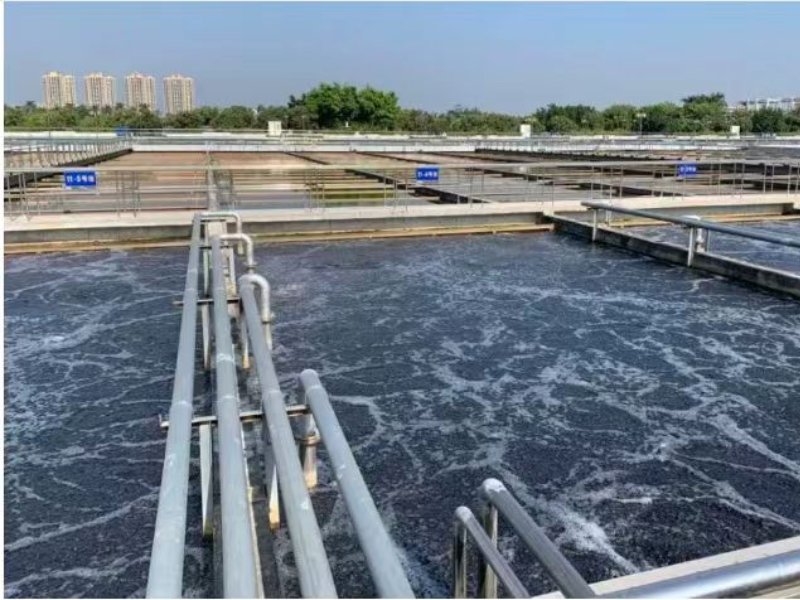
Polyacrylamide (PAM) is a water-soluble linear polymer formed by the polymerization of acrylamide (AM) monomer initiated by free radicals. According to ionic properties can be divided into anionic polyacrylamide, cationic polyacrylamide, non-ionic polyacrylamide, amphoteric polyacrylamide four types.
Polyacrylamide properties
(1) flocculation: polyacrylamide can make suspended matter through the point and bridge adsorption, flocculation.
(2) adhesion: it can play a bonding role through mechanical, physical and chemical effects.
(3) resistance reduction: polyacrylamide can effectively reduce the friction resistance of the fluid, adding a trace of PAM in water can reduce the resistance of 50-80%.
(4)thickening: PAM has thickening effect under both neutral and acidic conditions. When the PH value of PAM is above 10, it is easy to hydrolyze and form a semi-network structure, the thickening will be more obvious.
Polyacrylamide uses:
(1) Municipal sewage
In the treatment of domestic sewage, polyacrylamide can promote the suspended particles of rapid agglutination settlement to get the result of separation, clarification by the electrical neutralization and its own adsorption bridge function,It is mainly used in the front section flocculation settling and the back section sludge dewatering of sewage treatment plant.we strongly recommend our cationic polyacrylamide series with low and medium chagre.
(2) Industrial wastewater
When polyacrylamide is added to the suspended turbidity particles in the water, by means of the neutralization of the electrical property and the adsorption bridge function of the polymer itself, the suspended turbidity particles can be rapidly coagulated and settled, and the effect of separation and clarification can be achieved, so as to improve the operation efficiency and reduce the operation cost.we recommend our models of ASIAFLOC A73018 and ASIAFLOC A72015.
(3) Textile printing and dyeing industry
As a sizing agent and finishing agent for fabric post-treatment, polyacrylamide can produce a protective layer that is supple, wrinkl-resistant and mildew resistant. With its strong hygroscopicity, the breakage rate of spinning yarn can be reduced. It can also prevent static electricity and flame retardant of the fabric. When used as a printing and dyeing auxiliaries, it can enhance the adhesion fastness and heighten the brightness of the products. It can also be used as a non-silicon polymer stabilizer for bleaching; In addition, it can also be used for efficient purification of textile printing and dyeing sewage.our cationic and anionic polyacrylamide have good performance for this application.
(4) Paper industry
Polyacrylamide is widely used as retention aid, filter aid and dispersant in the field of paper making. Its function is to improve the quality of paper, improve the dehydration performance of pulp, improve the retention rate of fine fiber and filler, reduce the consumption of raw materials and environmental pollution. The effect of its use in papermaking depends on its average molecular weight, ionic properties, ionic strength and the activity of other copolymers. Non-ionic PAM is mainly used to improve the filtering property of pulp, increase the strength of dry paper, and improve the retention rate of fiber and filler. Anionic copolymers are mainly used as dry and wet reinforcing agents and resident agents for paper. Cationic copolymer is mainly used in papermaking wastewater treatment and filtration aid, and it also has a good effect on improving the retention rate of filler. In addition, PAM is also used in papermaking wastewater treatment and fiber recovery.
(5) Coal industry
Coal washing wastewater, coal preparation plant of slurry, the ground of the coal-fired power plant washing wastewater is a mixture of water and fine coal, its main characteristic is high turbidity, solid particle size, solid particle surface more negatively charged, same-sex repulsion between the charge to keep these particles in the water dispersion state, is affected by gravity and Brownian motion. Because of the interaction between the solid particles in the coal slime water, the properties of the coal washing wastewater are quite complex, which not only has the properties of suspension, but also has the properties of colloid. In order to make the slime water precipitate quickly in the thickening pool, ensure qualified washing water and pressure filtration slime production, and make the production run efficiently and economically, it is necessary to choose appropriate flocculant to strengthen the treatment of slime water. A series of polymer flocculating dehydrants developed for coal slime dehydration in coal washing plant have high dewatering efficiency and simple operation.